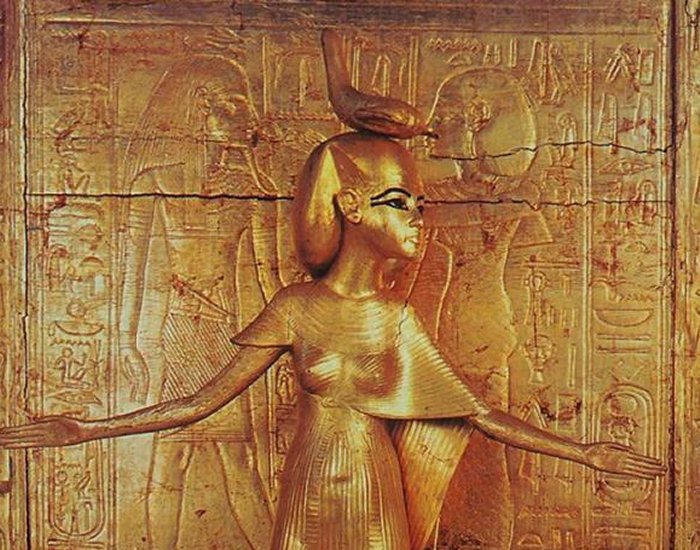Serket: Scorpion Goddess Who Could Heal Poisonous Bites And Sting Evildoers
A. Sutherland - AncientPages.com - In ancient Egyptian beliefs, Serket (Serqet, Selkis) controlled the breath of life, protected righteous deeds, healed deadly bites of snakes and scorpions, and punished evildoers.
Serket and her scorpion. Edfu Temple. Image credit: MatthiasKabel - CC BY-SA 3.0
The scorpion is a symbol that appeared on the earliest Egyptian artifacts related to the earliest human settlements to the beginning of the Early Dynastic Period around 3100 BC. Serket was depicted as a scorpion with the head and torso of a woman or a woman with a scorpion on her head.
In a strong association with the scorpion, which is famous for protecting its young, also Serket symbolizes the robust protection of motherhood and nurturing of children. In this aspect, she was often compared to the Egyptian goddess Isis, who protected Horus from Seth, the god of chaos, and during the child's infancy.
Generally viewed as a benevolent and protective deity, Serket was given different and beautiful titles. Some of them are: "Lady of Heaven," "Mistress of the Sacred Land," "Lady of the Beautiful Tent," and "The Mistress of the Beautiful House," but this goddess could also punish if necessary when she disapproved of something or someone.
Ancient Egyptians believed that Serket had power over snakes, scorpions, and their poisonous and deadly bites. Thus, she could sting evildoers and cure others who suffered from scorpion stings and snake bites.
Serket protecting the shrine for the canopic vases of the Tomb of Tutankhamon. Image credit: National Museum, Cairo, Egypt.
Because Serket could cure snake bites, she was sometimes known as the protector from Apep (or Apophis), a demon in snake figure in ancient Egypt's beliefs, widely known as the evil snake god.
Serket also plays a role in the fight against the serpent.
In Coffin Texts spell 752, the deceased says: "I am skilled in the craft of Serket-Hetyt; therefore I will drive off Apophis, ferrying across the firmament."
The goddess's protective role (alone and in the company of other deities) is attested in the Pyramid Texts when the deceased king says: "My mother is Isis, my nurse is Nephthys… Neith is behind me and Serket is before me…" (PT 1375).
Together with three other goddesses (Nephthys, Isis, Neith), Serket protected the body and vital organs of the deceased.
The organs were traditionally stored in the canopic jars and guarded by four minor deities called the 'Four Sons of Horus.'
One of them was the baboon-headed Hapy, who guarded the lungs (protected by Nephthys). Another was the human-headed Imsety, who guarded the liver (and who was himself guarded by Isis). The third was the jackal-headed Duamutef, who defended the stomach (often protected by Neith), and the falcon-headed Qebesenuef, guardian of the intestines (often protected by Serket).
The jars were identified with the four protective goddesses Isis, Nephtys, Neith, and Serket.
This deity did not have many temples raised in her honor, but she had a large number of priests in many communities. She was initially worshiped in the Delta, but her popularity spread throughout the land, and cult centers were established at Djeba (Edfu) and Per-Serqet (Pselkis, el Dakka).
Ancient Egyptians believed that they could save themselves from all venomous creatures by venerating the scorpion goddess.
The goddess was associated with magic, and many magical spells confirm her role as a patroness of practitioners of magical medicine dealing with poisonous bites of scorpions and snakes.
Written by – A. Sutherland - AncientPages.com Senior Staff Writer
Copyright © AncientPages.com All rights reserved. This material may not be published, broadcast, rewritten or redistributed in whole or part without the express written permission of AncientPages.com
Expand for referencesReferences:
Hart, G. A Dictionary of Egyptian Gods and Goddesses
Jackson, Roy. Egypt
More From Ancient Pages
-
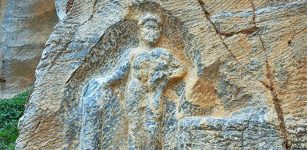 Ancient Relief Depicting Heracles With His Crook And A Seven-Headed Snake Should Be Protected
Archaeology | Dec 14, 2015
Ancient Relief Depicting Heracles With His Crook And A Seven-Headed Snake Should Be Protected
Archaeology | Dec 14, 2015 -
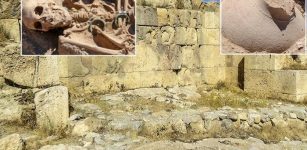 Urartian Noble Woman Buried With Jewelry Found In 2,750-Year-Old Necropolis Of Çavuştepe Castle
Archaeology | Sep 10, 2020
Urartian Noble Woman Buried With Jewelry Found In 2,750-Year-Old Necropolis Of Çavuştepe Castle
Archaeology | Sep 10, 2020 -
 3-D Reconstructions Of Three Wooden Boats Found At Ancient Port In Italy
Archaeology | Jun 23, 2020
3-D Reconstructions Of Three Wooden Boats Found At Ancient Port In Italy
Archaeology | Jun 23, 2020 -
 Khufu Boat And Unique Boat-Building Technique Of Ancient Egyptians
Artifacts | Jun 20, 2017
Khufu Boat And Unique Boat-Building Technique Of Ancient Egyptians
Artifacts | Jun 20, 2017 -
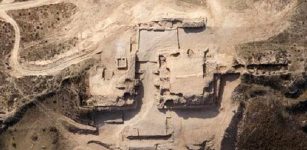 First Chinese Murals Unearthed In Shimao Ruins Are Over 4,000 Years Old
Archaeology | Aug 22, 2015
First Chinese Murals Unearthed In Shimao Ruins Are Over 4,000 Years Old
Archaeology | Aug 22, 2015 -
 Mysterious Lost Kingdom Of Urartu And Its Enigmatic History
Featured Stories | Jul 6, 2025
Mysterious Lost Kingdom Of Urartu And Its Enigmatic History
Featured Stories | Jul 6, 2025 -
 Scientific Disagreement Over The Bronze Age Tin Ingots From The Uluburun Shipwreck
Archaeology | Sep 25, 2023
Scientific Disagreement Over The Bronze Age Tin Ingots From The Uluburun Shipwreck
Archaeology | Sep 25, 2023 -
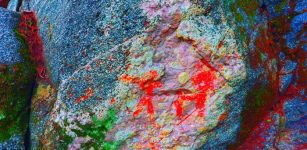 Unusual Rock With Ancient Paintings Discovered By Hiker In Norway
Archaeology | Jun 23, 2023
Unusual Rock With Ancient Paintings Discovered By Hiker In Norway
Archaeology | Jun 23, 2023 -
 Uncovering 16th Century Scottish Royal Dockyards Used By King James IV’s Navy
Archaeology | May 24, 2018
Uncovering 16th Century Scottish Royal Dockyards Used By King James IV’s Navy
Archaeology | May 24, 2018 -
 Unusual And Well-Preserved Skeleton Discovered In Ancient Pompeii Sheds New Light On The Cultural Life Of The City
Archaeology | Aug 18, 2021
Unusual And Well-Preserved Skeleton Discovered In Ancient Pompeii Sheds New Light On The Cultural Life Of The City
Archaeology | Aug 18, 2021 -
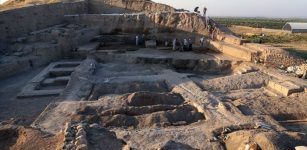 Excavations At Oylum Höyük In Southeast Anatolia Near Syrian Border – Resumed
Archaeology | Jul 26, 2020
Excavations At Oylum Höyük In Southeast Anatolia Near Syrian Border – Resumed
Archaeology | Jul 26, 2020 -
 On This Day In History: Execution Of Saints Crispin And Crispinian – On Oct 25, 286
News | Oct 25, 2016
On This Day In History: Execution Of Saints Crispin And Crispinian – On Oct 25, 286
News | Oct 25, 2016 -
 Surprising And Fascinating Finds On The Wreck Of The Lootsi Cog
Archaeology | Nov 27, 2023
Surprising And Fascinating Finds On The Wreck Of The Lootsi Cog
Archaeology | Nov 27, 2023 -
 19,000 Ancient Artifacts Unearthed At Calthorpe Gardens, England
Archaeology | Jun 12, 2024
19,000 Ancient Artifacts Unearthed At Calthorpe Gardens, England
Archaeology | Jun 12, 2024 -
 Aboriginal Legends Tell Millennia-Old Stories Of Events In The Sky
Myths & Legends | Mar 6, 2015
Aboriginal Legends Tell Millennia-Old Stories Of Events In The Sky
Myths & Legends | Mar 6, 2015 -
 Roman-era mass grave with 60 bodies found in farmer’s field
Civilizations | Aug 27, 2015
Roman-era mass grave with 60 bodies found in farmer’s field
Civilizations | Aug 27, 2015 -
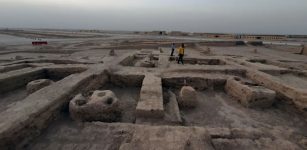 Ancient Parthian City With Hundreds Of Artifacts Unearthed In Iraq
Archaeology | Aug 16, 2022
Ancient Parthian City With Hundreds Of Artifacts Unearthed In Iraq
Archaeology | Aug 16, 2022 -
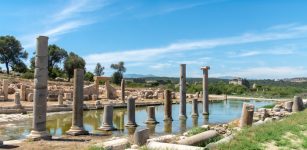 New Study Shows How The Ancient World Adapted To Climate Change
Archaeology | Jun 28, 2022
New Study Shows How The Ancient World Adapted To Climate Change
Archaeology | Jun 28, 2022 -
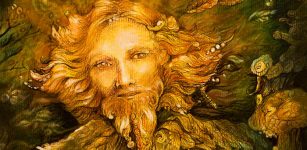 Never-Ending Battle Of The Oak King and Holly King – Confrontation Of The Light And The Darkness
Celtic Mythology | Dec 17, 2021
Never-Ending Battle Of The Oak King and Holly King – Confrontation Of The Light And The Darkness
Celtic Mythology | Dec 17, 2021 -
 Disappearance Of Mastodons Still Threatens South America’s Native Forests
Evolution | Jun 17, 2025
Disappearance Of Mastodons Still Threatens South America’s Native Forests
Evolution | Jun 17, 2025


